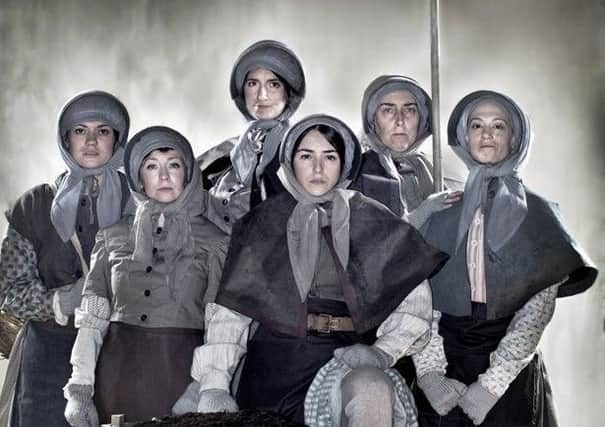Joyce McMillan: Women's voices are growing stronger in Scottish theatre


Published by the independent theatre consultant Christine Hamilton, the report covers Scotland’s 24 main subsidised companies, during the 2014-2015 season; and it shows that women are now in creative leadership roles in 46 per cent of those companies, that 47 per cent of the year’s 137 productions were directed by women, that 39 per cent of the playwrights involved were women, and that of the 811 acting roles cast during the year, 46 per cent went to female actors. This probably represents the highest level of female representation ever achieved in Scottish theatre; and it shows a significant improvement since 2009, when a similar survey conducted by Scotland’s woman-led theatre company Stellar Quines showed only 26 per cent of productions directed by women, and only 26 per cent involving female writers.
Yet although women’s voices are being heard more strongly on Scotland’s stages than ever before – in shows like Sue Glover’s mighty Bondagers at the Lyceum in 2014, and Rona Munro’s huge James Plays trilogy for the National Theatre of Scotland – there is also some bad news for women in theatre, in two distinct areas. In the first place, the survey provides no insight into the relative earnings of women in theatre; and other surveys suggest that women directors are far more likely to be working in shoestring environments such as A Play, A Pie And A Pint, that full-length play commissions still go overwhelmingly to male playwrights, and that female actors are far more likely to be cast in very minor roles, for example as maids or secretaries. Of Scotland’s six top theatre companies in terms of funding, five are run by men, and only one by a woman; and there are still areas of theatre work – notably lighting and sound design – where women’s involvement struggles to reach the 10 per cent mark.
Advertisement
Hide AdThen secondly, there is the fact that although Scotland now has a female First Minister, a female Culture Secretary and a female leader of its top arts agency – all of them vocally committed to improving women’s representation – neither the Scottish Government nor Creative Scotland is prepared to do the work of monitoring women’s presence in Scotland’s cultural life, preferring to focus on other traditional areas of disadvantage.
“In some ways, the most striking thing about this survey is that I had to do it myself, on my own initiative, with the help of a group of volunteers,” says Christine Hamilton, a former Deputy Director of the Scottish Arts Council. “I’m delighted that the survey shows real progress in recent years. But we know – from the history of the Scottish Parliament and other institutions – that this isn’t always a story of steady progress; a survey conducted by Equity a few years ago showed a serious decline in women’s representation in theatre between 1993 and the late 2000s, and all the evidence is that if we don’t keep gathering the data, and bearing these issues in mind, the situation can easily slip backwards.
“Of course, no-one wants to put any limits on what artists themselves are doing; if a great all-male show like Black Watch comes along, there’s always room for that. And any theatre whose remit includes the classical canon of drama inevitably has some male bias, in terms of playwrights and casting. The survey shows, though, that where women are in leadership roles, that balance starts to improve, quite rapidly; and that despite being 51.5 per cent of the population, women are still nowhere near the 50/50 mark when it comes to top creative jobs. So there’s plenty of work still to do; and I hope our leading arts agencies will commit themselves to gathering the data, and making that information as widely available as possible, so that we can get on with the job.”